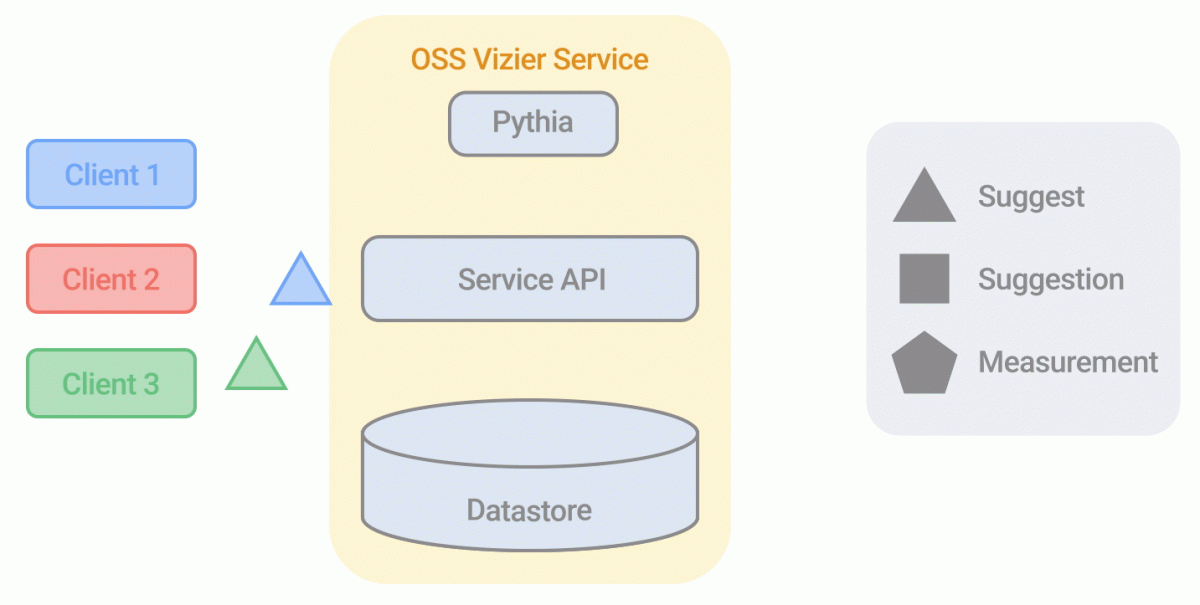Google AI Open Sources Vizier

The one thing I adore about open source software (OSS) is that it's the type of software that allows any one of us to unleash our inner coder skills. Just ensure you’ve been to coding class. The idea behind OSS is to fix bugs, improve and add new features resulting in a more innovative and faster development when compared to doing it using a single company.

Let me give you an idea of what Vizier is so that we’re on the same page in this article. Vizier is a black-box optimization system in which an algorithm is trained to find the best solution to a problem without any knowledge of the details of the problem. It is a part of the Google Cloud Auto ML Platform and provides users with a platform to run optimization experiments.
In 2017 Google AI announced the open-sourcing of Vizier. This meant that Google could now contribute to the growing field of black-box optimization and give back to the research community. Making Vizier available to the public has allowed the system to develop with further advances in the field while others used the system for their own experiment with new approaches to black-box optimization. Google Vizier overcame several design problems to adapt to several use cases.
Google Open Source Vizier is the variant of the Vizier system that has been made available as an OSS by Google. Open Source Vizier allows customers to handle computation and large volumes of data and monitor their workflows while conveniently managing from a single web-based interface using cloud computing. One of the perks of using the Google cloud computing infrastructure is the Google Kubernetes Engine and the Google Cloud AI platform.

Working with OSS Vizier
OSS Vizier is designed for use in various scenarios in deep machine learning with its inbuilt Python user interface. Vizier provides an easy-to-use and powerful platform to perform optimization, making it a fantastic tool for data scientists, machine learning engineers, and developers seeking to find hyperparameters for their models. The following features make that possible.
- Vizier offers multiple techniques, such as Bayesian optimization and grid search, to automate tweaking hyperparameters.
- Vizier tracks experiments by tracking each step in an investigation, recording its outcomes, artifacts, and parameters.
- It's compatible with machine learning libraries such as PyTorch, TensorFlow, and Scikit-learn.
- It optimizes managing workflows by allowing multistep, data preparation for complicated processes as well as their assessment and model training.
- It comes built with security and privacy in mind. It enables the encryption of sensitive information and also offers secure procedures for authorization and authentication. The security system is also easily adaptable, allowing an easy setup of privacy rules and security for businesses.
- It's excellent when organizing machine learning experiments because it comes with a system that accommodates various applications and fields for practitioners and academics.
- Lastly, it is suitable for large-scale and data-intensive applications.
I’ll safely say that Vizier comes in handy through its scalable and simple way of performing black-box optimization and hyperparameter optimization tasks. As part of the OpenAI environment, it eases pressure by optimizing tasks for developers, machine learning engineers, and developers.
Advertisement



















Oh, well. Another reply and not so enthusiastic.
Why is it that there is no link to the actual Vizier project?
I would suggest https://ai.googleblog.com/2023/02/open-source-vizier-towards-reliable-and.html as a starting point.
All of the links that look like they should point to independent knowledge articles are actually pointing back to ghacks.net, or in one case facebook – which is totally useless for many of us.
Thanks. An interesting article about open source and AI/ML.
While I don’t have any huge complaints about ghacks, it seems that most of the articles are about products rather than underlying technology.
One other thing to like about OSS is just the ability to see how code is constructed and to have lots of reference implementations – some of them excellent.